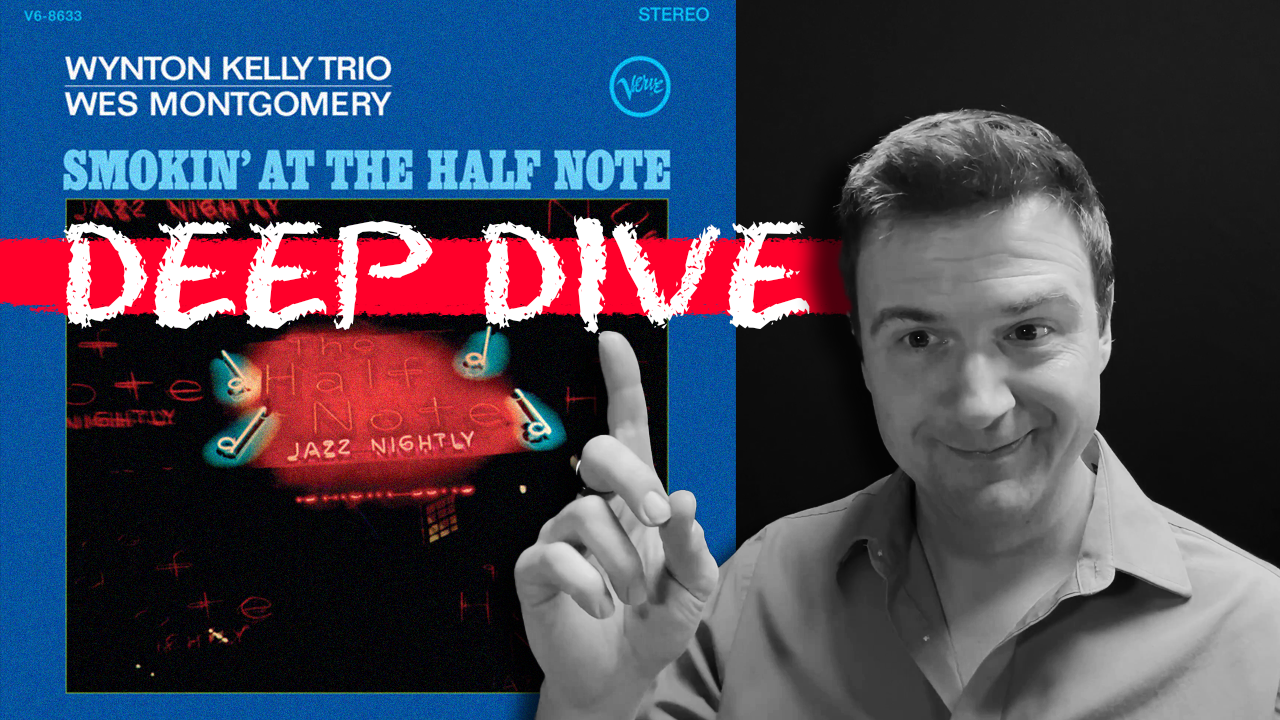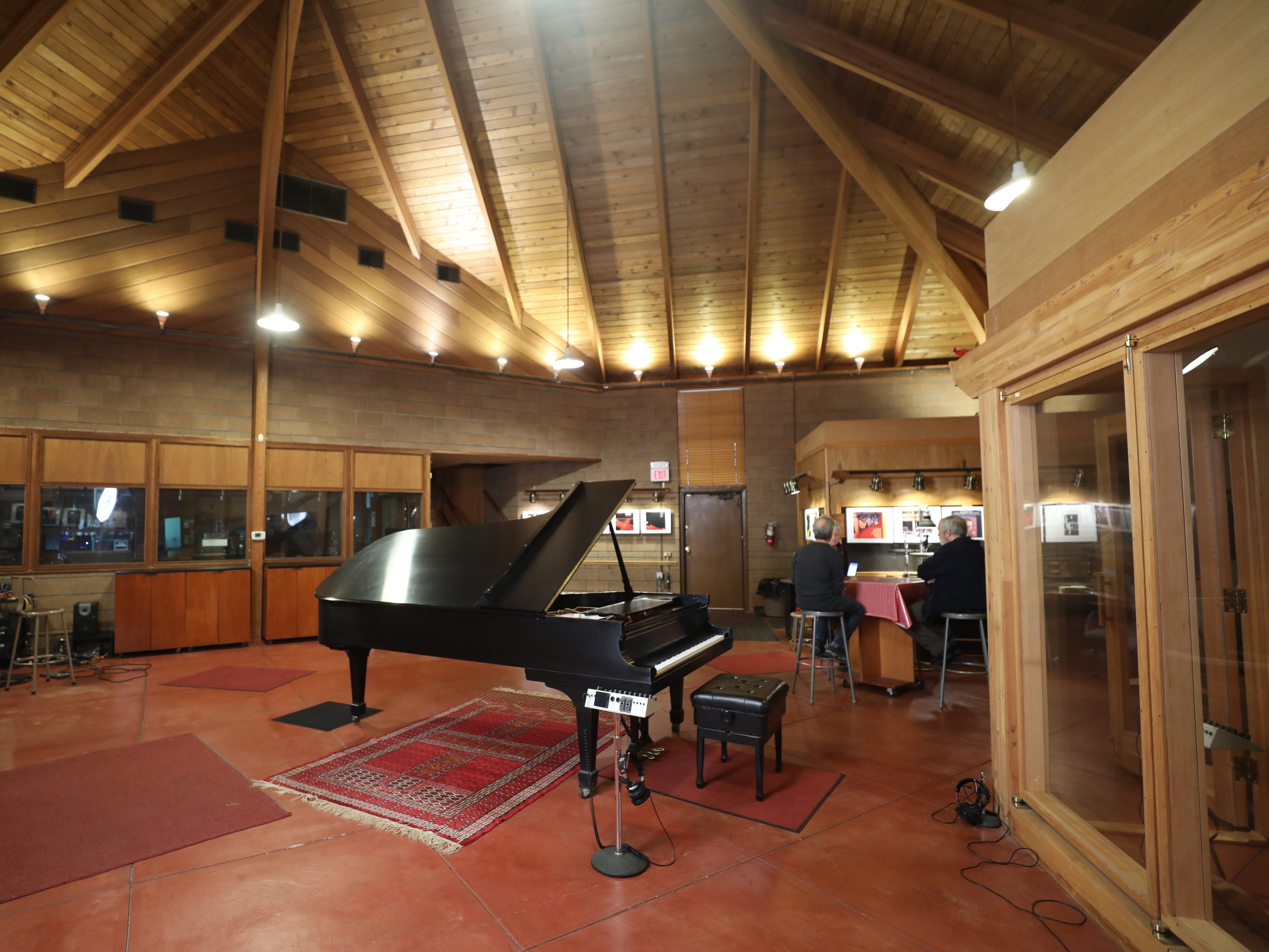
Album Deep Dive: Wes Montgomery – Smokin’ at the Half Note
Sep 30, 2025It’s always worth reminding ourselves: you don’t need a bunch of exotic scales or advanced theory to create an electrifying solo. Sometimes, it’s about swing, sound, and soul. In the words of guitarist Ben Monder:
“You just don’t want this solo to end… and it kind of doesn’t.”
Welcome to Album Deep Dives here on JazzGuitarLessons.net. Today, let’s explore an album that has influenced just about every modern jazz guitarist: Smokin’ at the Half Note (1965), featuring the Wynton Kelly Trio with Wes Montgomery.
Why This Album Matters
When asked which records shaped them the most, legends like Peter Bernstein, Ben Maunder, and Pat Metheny all placed Smokin’ at the Half Note at the very top of their lists.
And it’s no wonder why:
-
Wes’s solos are jaw-dropping yet deeply rooted in the blues.
-
The rhythm section (Wynton Kelly, Paul Chambers, Jimmy Cobb) is one of the greatest of all time.
-
The production has that unmistakable Rudy Van Gelder magic.
Fresh off playing with Miles Davis on Kind of Blue and Someday My Prince Will Come, Kelly, Chambers, and Cobb had already proven themselves as swing masters. Pair them with Wes Montgomery, a rising guitar star, and you’ve got lightning in a bottle.
The Not-So-Live Album
The cover and title suggest a live set at New York’s Half Note Club — but that’s only partly true.
Side A (two tracks) was recorded live at the Half Note.

Side B (three tracks) was recorded months later at Van Gelder Studios in Englewood Cliffs, NJ.

So the original Verve LP has just five tunes, but together they form a perfect snapshot of Wes at his peak.
The Solos: Sheer Inspiration
“No Blues”
The opener (a Miles Davis tune) might contain Wes’s most iconic recorded solo. He begins with simple single-note blues lines, then builds momentum with punctuated shots in octaves. Jimmy Cobb instantly reacts, locking in the syncopation.
Before long, Wes transitions into full-octave soloing — so fluid and natural it almost feels more comfortable than single notes. Then comes the chord solo, so astonishing that Wynton Kelly himself stopped comping, just to listen.
The harmony? Mostly just blues vocabulary. The effect? Completely transcendent.
“If You Could See Me Now”
The ballad side of Wes. Pat Metheny has even called this his favorite Wes solo of all time. It’s a flowing chain of ideas — each introduced, developed, and resolved in just a few bars before moving on to the next.
Add in Wes’s immaculate double-time feel and, of course, another stunning octave section, and you’ve got one of the most lyrical guitar statements ever recorded.
“Unit 7”
A blues with a Latin-tinged head, written by bassist Sam Jones. Wynton Kelly takes the first solo with sparse comping from Wes (listen for the Charleston rhythm figure). Then Wes enters with one of the catchiest blues solos ever laid down — melodic enough to sing, yet swinging hard.
“Four on Six”
Now a jazz guitar standard, this Wes original is the album’s most complex arrangement. With its parallel perfect fifths and a mix of solos from the whole band, it’s shorter and tighter than No Blues, but it balances the record beautifully.
“What’s New”
The closer is tender and reflective. Wes plays the melody entirely in octaves, almost like a jazz crooner singing through the guitar. After such intensity earlier in the album, this is the perfect way to send the listener off.
The Sound of Van Gelder’s Church
Side B was recorded at Rudy Van Gelder’s famed studio, a space designed like a church, complete with natural reverb. Fun fact: before becoming a full-time engineer, Van Gelder was an optometrist, saving up to build his dream studio with the help of an associate of Frank Lloyd Wright.
That room — with its clarity and resonance — became home to A Love Supreme, Maiden Voyage, countless Blue Note sessions… and, of course, Smokin’ at the Half Note.
Bonus Listening
For those who can’t get enough of this band:
-
Full House (1962) – with saxophonist Johnny Griffin, also featuring the Kelly Trio.
-
Smokin’ in Seattle (1966) – another live recording, considered a “spiritual successor.”
-
Willow Weep for Me – posthumous release with string overdubs, drawn from the Half Note sessions.
Final Thoughts
Smokin’ at the Half Note is more than just a guitar record. It’s a masterclass in swing, taste, and the art of building a solo from simple beginnings to breathtaking climaxes.
And maybe the biggest lesson Wes leaves us with is this: you don’t need to play complex scales to sound profound. Stay close to the blues, listen deeply to the rhythm section, and aim for pure joy in every note.
Because when you do, people — just like Ben Monder said — won’t want your solo to end.









